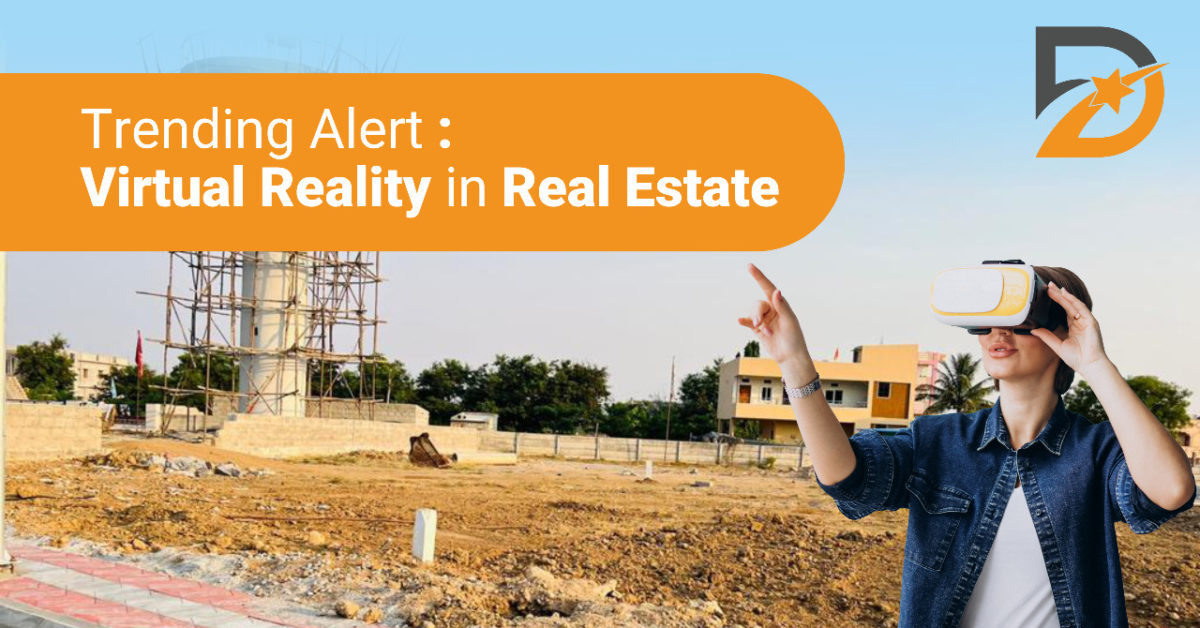We are evolving at a breakneck pace in this modern age of technology, moving toward cutting-edge technology and inventive ideas to improve client experience.
In terms of sales, even the real estate industry is undergoing substantial changes. Virtual reality is one of the market’s most inventive methods.
Virtual reality is a computer-generated setting or setting that provides users with the impression of being in a virtual environment with realistic-looking scenes and objects. Although it looks to be true, augmented reality is a hoax designed to provide viewers with the illusion of realism. A VR headset and possibly even a helmet are used to produce virtual reality.
How does Virtual Reality function?
Virtual reality is a software-based simulation that gives users the impression that they are in a genuine environment. Virtual reality headsets, which are gadgets that replace our surroundings, are a key component of this. This is a sophisticated system that monitors your movements and interactions with the virtual environment. Gyroscopic sensors, accelerators, and magnetometers in VR headsets operate in tandem with our senses to offer a realistic experience.
Real Estate Using Virtual Reality
Real estate developers have been paying special attention to virtual reality, which is thought to symbolize the industry’s bright future in terms of sales. The real estate sales profession is already being transformed by virtual reality.
The primary motivation for creating virtual reality is to improve the sales process for open land luxury houses, off-market properties. You can use software to create the property while using virtual reality for real estate. The biggest benefit of this type of sales tactic is that your clients do not need to see the property in person. You may utilize virtual reality to sell real estate.
Virtual Reality on Open Land Investment
For your real estate, you can have a virtual reality property viewing. Your clients can explore the nuances of your property by using a VR headset. You don’t need to set up a 3 D model or endorse the expense of getting visitors to impress and convert those leads.
The buyer can get a detailed view of the open land via virtual reality, and then walk around inspecting every element. You may provide insight into every aspect of your property, from the layout to all the possible aesthetic options.
Why use virtual reality when we can simply make a spectacular film and snap some high-resolution images to convey the same information?
It’s difficult to capture minute details in a video or photograph, and the depth of field may mislead your viewers even more. Virtual reality may fill in these gaps, giving your buyers an experience that appears to be comparable to viewing the property in person. Virtual reality may fill in these gaps, giving your buyers an experience that appears to be comparable to viewing the property in person.
Conclusion
The key advantages of VR in the real estate market are cost savings. You do not need to invest in developing a model home to demonstrate the property’s shrewdness to your users. It also saves your buyers a lot of time and work because they don’t have to see the property in person. They are free to visit the property anytime they desire and as many times as they want to acquire a feel for it.You may be quite creative with your ideas in virtual reality, and you can build a layout that appeals to your target demographic.
Even though Virtual Reality has come a long way, there appears to be plenty of room for expansion.
Trending Alert : Virtual Reality in Real Estate
